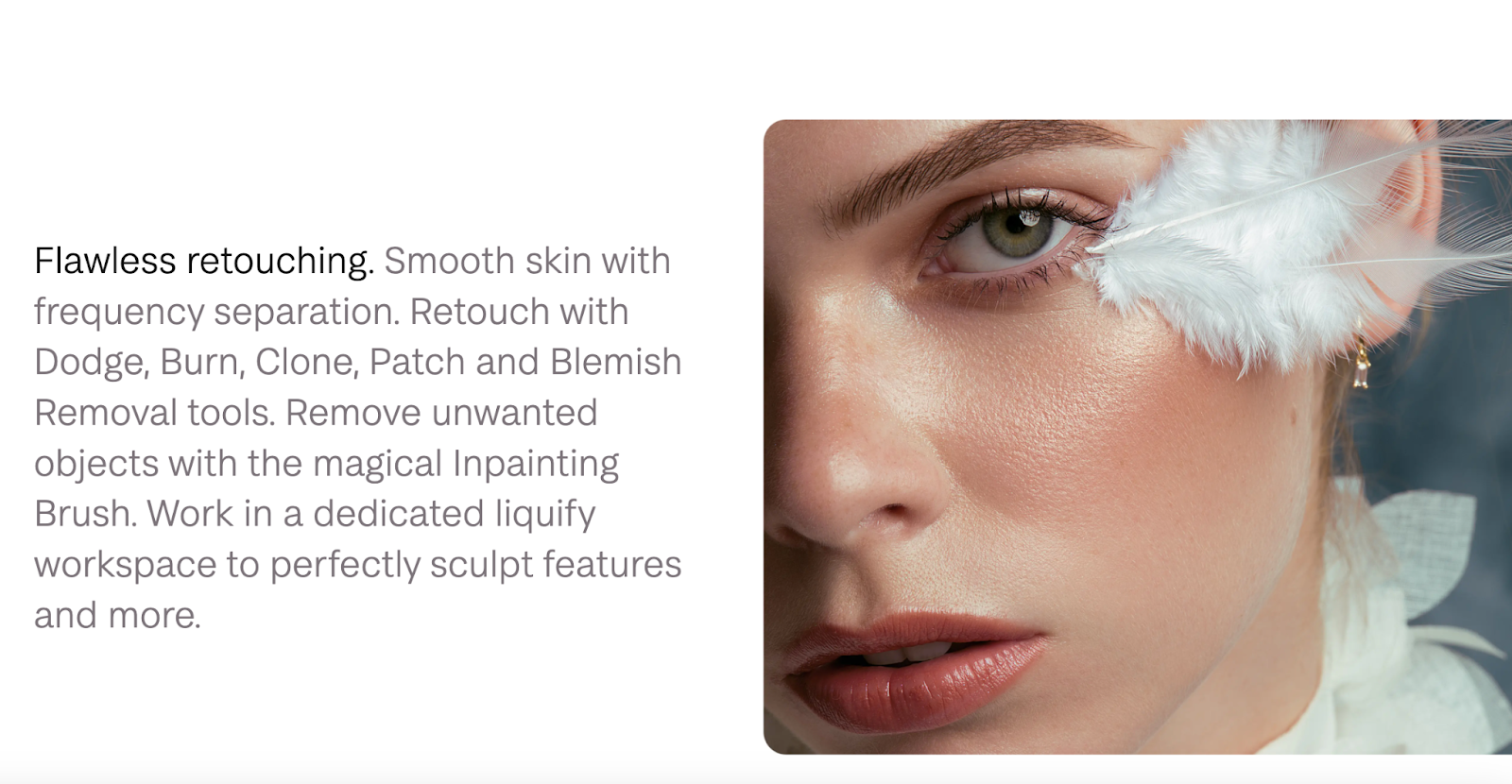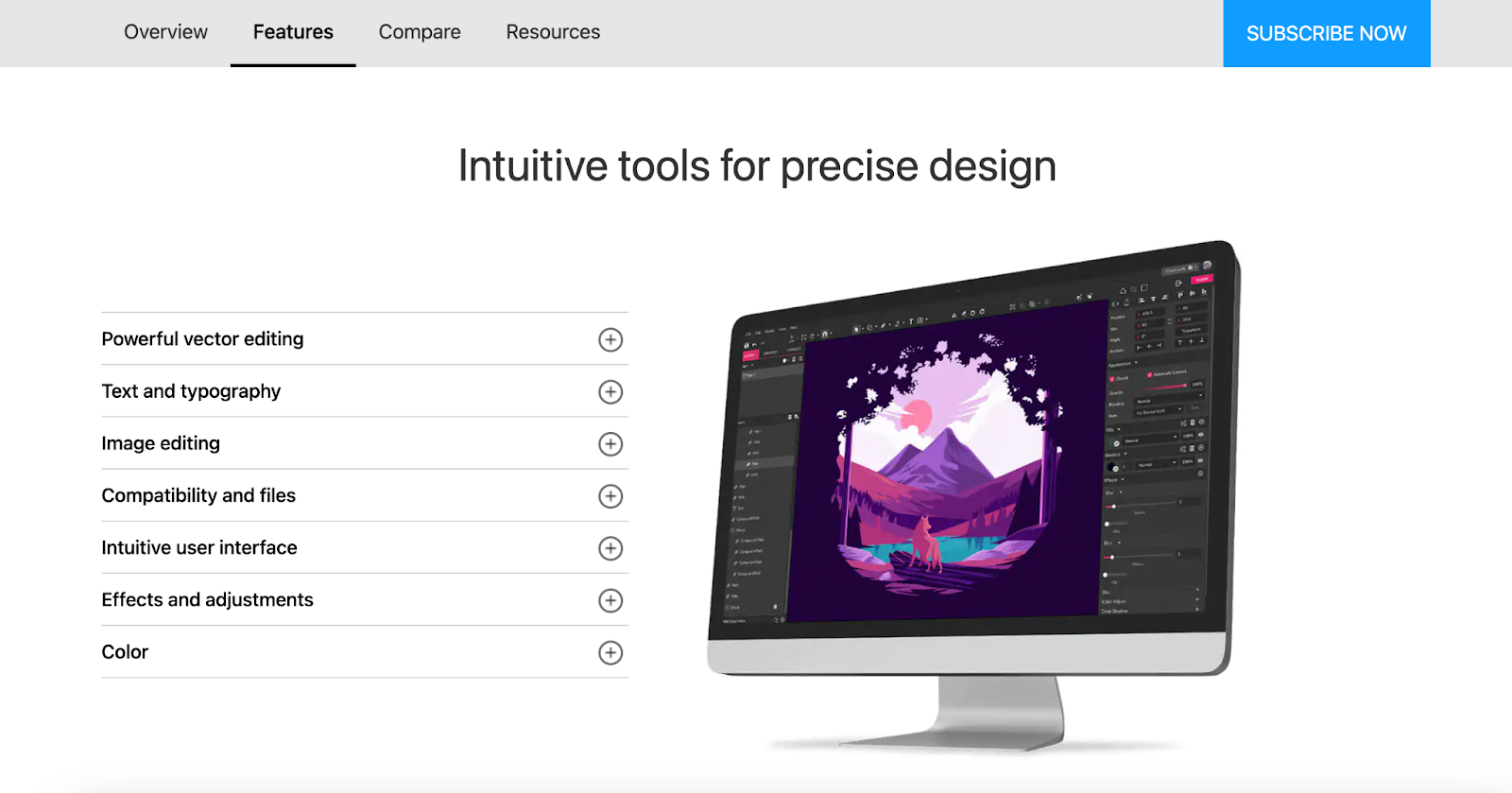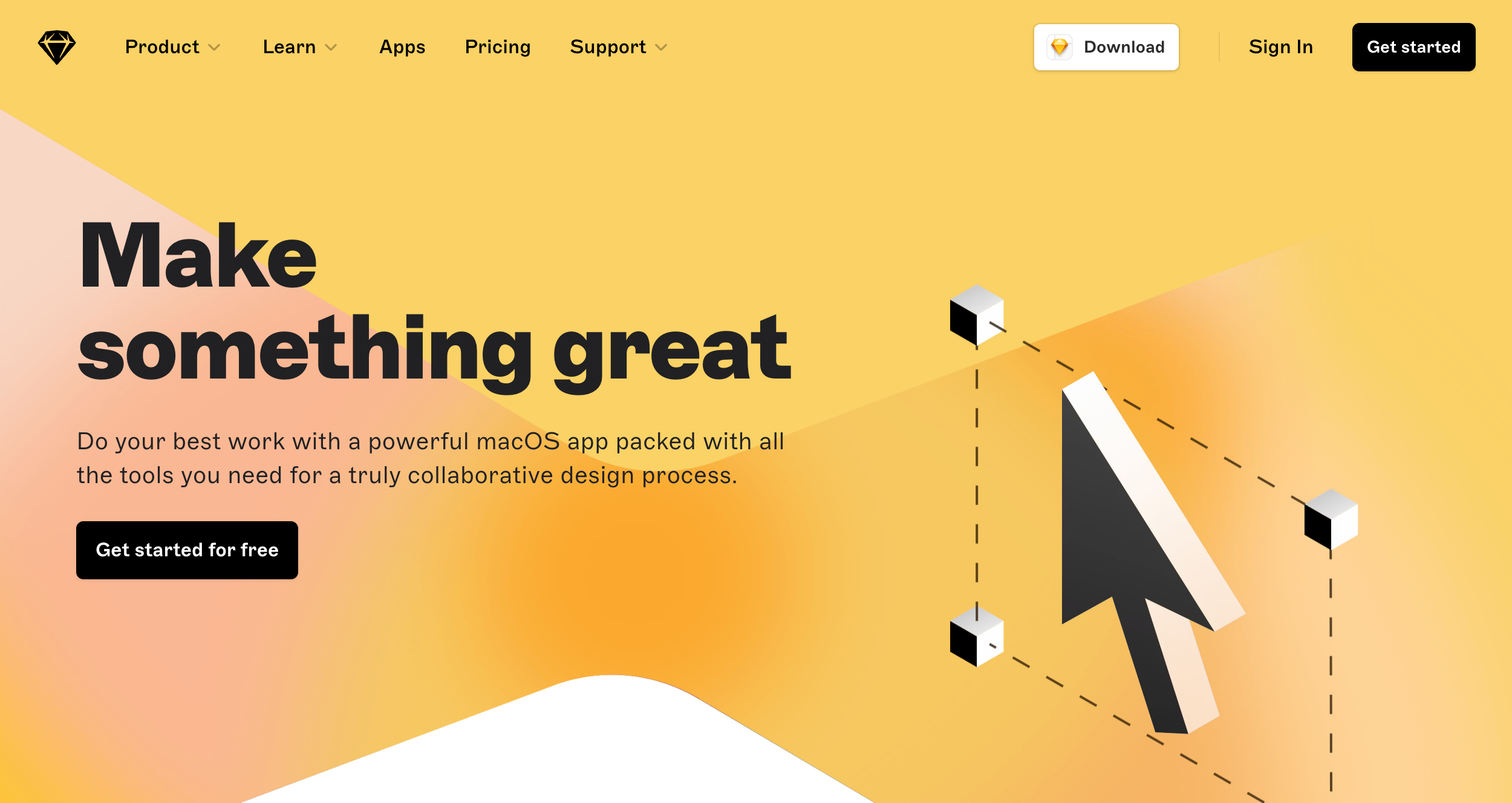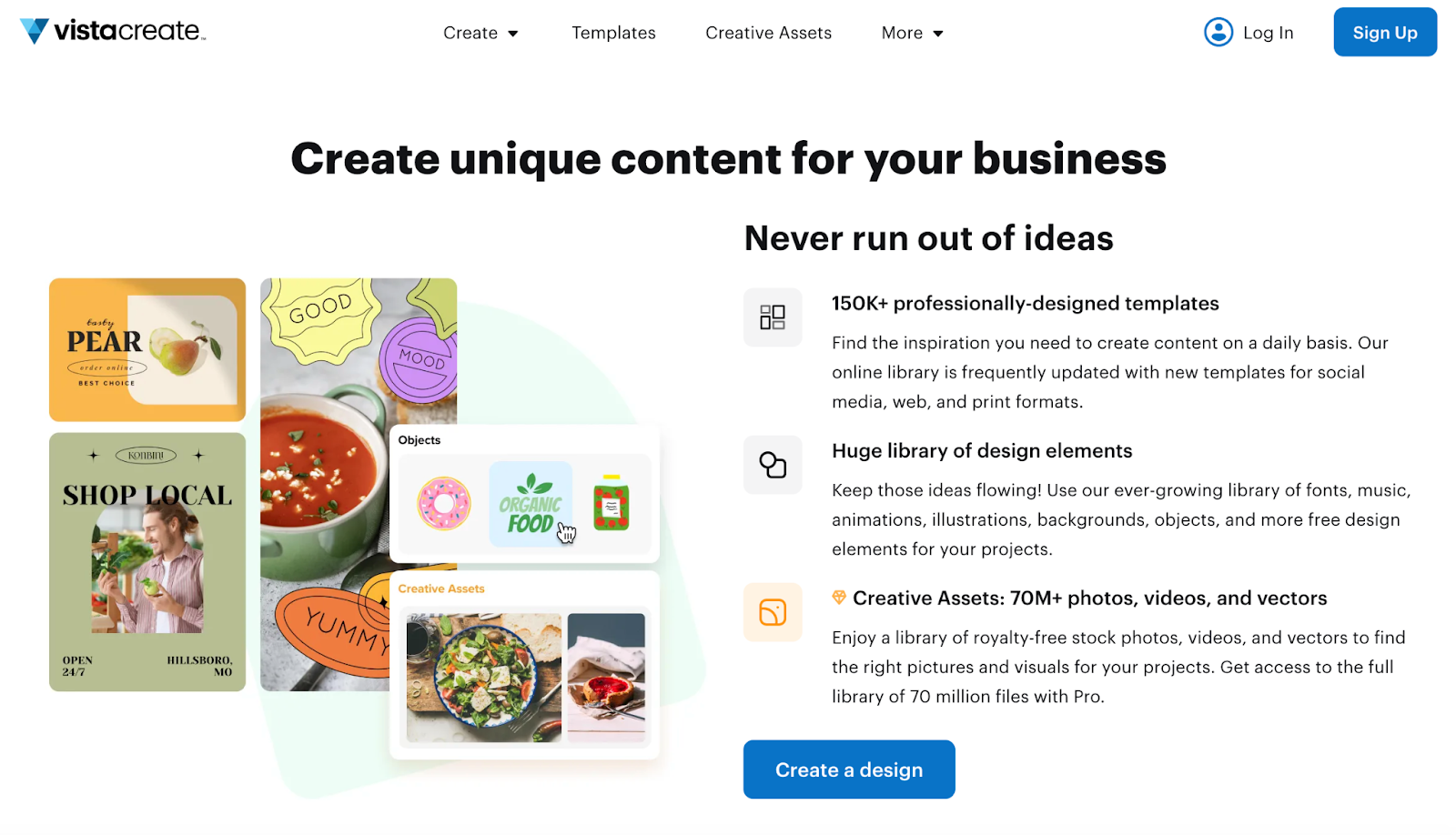In the realm of graphic design, professionals once had only a handful of specialized tools at their disposal. Today, however, the landscape has expanded, presenting a broad spectrum of software solutions catering to diverse graphic design requirements.
This comprehensive guide is designed to assist in selecting the perfect graphic design application tailored to your unique needs. We’ve meticulously analyzed a variety of top-notch graphic design programs and tools based on aspects such as pricing, supported platforms, key functionalities, benefits, drawbacks, and additional insights.
Explore an Array of 13 Graphic Design Applications and Tools
- Adobe Illustrator

Adobe Illustrator is the epitome of vector graphics software, having pioneered the field. It is the benchmark for quality in logos, graphics, infographics, and icons. Illustrator continuously enhances its offerings, including the AI-driven Generative Recolor tool that empowers users to discover infinite color schemes.
Despite its free trial period, Adobe Illustrator might not be the optimal choice for budget-conscious businesses or individual entrepreneurs. Post the trial, a subscription is mandatory, priced at $20.99 monthly for the annual plan, and $31.49 for the month-to-month plan.
Significant Characteristics:
- Vector Art Mastery: Autodetect artwork types, decolorize images, and streamline tracing activities.
- Font Recognition: Instantly identify and deploy fonts from within your designs.
- Export Control: Seamlessly export designs as WebP images for digital platforms.
- Handwriting Conversion: Convert handwritten fonts into digital formats.
- PDF Hyperlink Retention: Maintain active hyperlinks when exporting as a PDF.
Advantages:
- Seamless integration with Adobe’s suite of editing tools.
- Initiates projects with a blank canvas or pre-designed templates.
- Extensive vector illustration tools.
- Dynamic outputs suitable for various mediums.
- Multi-format file handling.
Disadvantages:
- Performance-intensive.
- Premium subscription costs.
- Sophisticated learning curve.
- Complicated file management.
- Basic photo editing functions.
Platform Availability: Windows, MacOS, iPad, and Android.
- Affinity Designer

For personal projects or those new to graphic design, Affinity Designer presents an intuitive interface. Standing tall against Adobe Illustrator, it features a parallel range of design utilities and user-centric tools such as tailored keyboard shortcuts for efficiency. It’s an economical option offering professional functionality without compromise.
Affinity Designer proposes a 30-day free evaluation, post which a single fee for continual use applies — $69.99 for MacOS and Windows, and $18.49 for iPad use.
Essential Features:
- Robust Color Handling: Embraces a multitude of formats, including CMYK for print and RGB for the web.
- Efficiency Aids: Regardless of the project, design becomes effortless with tailored grids and guides.
- Lifetime Usage: No recurring fees.
- Extreme Zoom: A staggering 1,000,000% zoom for meticulous design precision.
- X-Ray Vision: Peer into your design’s framework with enhanced accuracy.
Advantages:
- Unlimited artboards at your disposal.
- Lesser system dependencies.
- Cost-effective licensing.
- Uncomplicated configuration.
- Combined raster and vector workspace functionalities.
- Exceptional support team.
Disadvantages:
- Initial setup and documentation can be perplexing.
- Absence of cloud services.
- Steep learning curve is present.
Supported Platforms: Windows, MacOS, and iPad.
- Procreate

Procreate is touted as a total art studio, dedicated to iPad users and designed to complement the Apple Pencil. A one-time fee of $12.99 unlocks the doors to 3-D painting, superior brush control, and PDF import/export. Procreate differentiates itself with the unique ability to craft in 3D, viewable in AR, making it the go-to for those exploring animation.
Key Attributes:
- Edit Suite: 200 bespoke brush options.
- Color Tools: Smart color selection and effortless fill with ColorDrop.
- Final Touches: Filters to unify imagery and perfect the visual appeal.
- One-Time Purchase: Free of in-app transactions.
- Hover Features: Brush cursor enhancements, gallery previews, selection refinements, and brush size/opacity adjustments.
Strong Points:
- Comprehensive tutorial collection.
- Intuitive interface design.
- Apple Pencil synchronization for a natural drawing feel.
- Direct import of Photoshop brushes.
Limitations:
- Absence of a free variant.
- Constrained layer capabilities.
Design Platform: iPad exclusively.
- Adobe Photoshop

For decades, Adobe Photoshop has been the linchpin in desktop publishing, cherished by designers worldwide. Its image editing prowess is suited for both fresh entrants and seasoned experts, offering an approachable interface coupled with extensive instructions. Photoshop places power in creative hands, right from canvas dimensions to a variety of artistic filters.
Photoshop provides a week-long trial; thereafter, subscriptions commence at $20.99 monthly. Yet, for complete access to Adobe’s suite, the Creative Cloud package allows utilization of Photoshop, Lightroom, etc., at $54.99 monthly.
Featured Facilities:
- Workflow Enhancements: Automated operations and batch procedures for streamlined processing.
- Generative Fill: Harnessing text prompts to create innovative design concepts.
- Collaborative Editing: Manage sharing, feedback, and edit permissions effortlessly.
- User-Friendly Editing: Simplified layer management, selection aids, and masking tools.
Plus Points:
- Vast repository of stock assets, including images, typefaces, footage, icons.
- Seamless sync with other Adobe software solutions.
- Broad file format support, ranging from JPG to PNG.
Drawbacks:
- Steep pricing structure.
- Intensive system requirements.
- Prolonged loading periods.
Operational Platforms: Windows, MacOS, iOS, and Android.
- Affinity Photo

Affinity Photo emerges as a cost-effective Photoshop or Illustrator substitute, particularly for image edits. Its interaction with both vector and raster graphics is laudable, also endorsing the SVG format, akin to CorelDRAW. Template creation is possible, but the software does not natively include them. However, its small footprint and user-friendly nature, accompanied by a 30-day trial, ensure its appeal.
Lauded for its multidimensional prowess and affordable cost, Affinity Photo supports refined editing with 360-degree imagery, panoramic stitches, and HDR compilations. Its real-time edit responsiveness sets it apart from the competition.
Core Aspects:
- Professional Digital Edits: Incorporates HDR merging, raw image processing, and layer edits.
- One-Time Payment: No recurring subscriptions or hidden costs.
- Complimentary Packs: Additional editing packs available upon registry.
Advantages:
- Pricing that won’t break the bank.
- Compact design.
- Comprehensive trial offering.
- Dynamic brush customization.
- Prompt deployment support.
Cons:
- Absence of ready-made templates.
- Fewer keyword tagging options.
- Intermittent software hiccups.
Accessible On: Windows, MacOS, and iPad.
- Canva

Canva operates as a holistic toolkit for multiple design ventures like infographics, web layouts, or custom apparel. It employs a drag-and-drop modality that simplifies graphic creation for those new to the field. A robust asset library aids beginners, though many graphics necessitate additional purchases.
Canva stands out due to its scalability, with an expansive array of templates accommodating diverse industries. Available pricing plans include a cost-free variant oriented towards individual use and modest teams, with the paid tiers proffering the full spectrum of features, albeit a 1TB cloud storage limit.
Notable Elements:
- Drag-and-Drop Interface: Jumpstart your design journey without previous experience.
- Teamwork Utilities: Share projects with ease using team folders and live collaboration tracks.
- Social Integration: Instantly craft and post to renowned social networks.
Positives:
- User education through a minimal learning curve.
- Free plan availability.
- Assisted design creation with guided wizards.
- Wealth of resources and learning guides.
Negatives:
- Restricted free plan features requiring in-app investments.
- Non-editable final formats.
Available Via: Web browser, Windows, MacOS, Android, and iOS.
- CorelDRAW

With a lens on extraordinary design precision and refined illustration tools, CorelDRAW extends beyond mere image alteration software. CorelDRAW offers a dual payment structure: subscription and single-payment. Aimed at novices, the entry-level package stands at an upfront $129. Seasoned designers may prefer more comprehensive suites, with annual costs of $229 and one-off payments of $299.
For entities that rely heavily on CorelDRAW’s extensive functionalities — support for numerous file types, the CorelDRAW app, and advanced tutorials — this graphic design tool may appear pricy.
Preeminent Features:
- Unfettered Cloud Storage: Unlimited space within Corel’s Vector cloud.
- Broad File Accord: Handles PDF, SVG, SVGZ, EPS, JPEG, PNG, GIF, and more.
- Responsive Touch-Friendly Interface: Compatible with touch-enabled devices across iOS, Android, Chromebooks, and PCs.
- 3D Illustration: Modeling and visualization qualities are paramount.
Pros:
- Complete Google Fonts library.
- Easy-to-use template repository.
- Multilingual capabilities.
- Simplified teamwork features.
Cons:
- Demanding hardware prerequisites.
- Significant cost.
- Intricate learning path.
Compatible With: Windows and MacOS.
Compatible With: Windows and MacOS.
- Adobe InDesign

InDesign carves its niche as a dedicated desktop publishing platform within Adobe’s suite. It shines when crafting multi-layered images, presentations, and media-rich documents. Its styling options are excellent for creating consistent branding, making it an invaluable tool for elevating designs efficiently.
If Adobe InDesign resonates with your creative workflow, bear in mind the seven-day complimentary access that leads to a $20.99 per month subscription. For those requiring Adobe’s comprehensive toolkit, the Creative Cloud package at $54.99 per month includes InDesign alongside other creative software like Lightroom.
Innovative Features:
- Adobe Creative Synergy: Integrates with a vast library of creative assets.
- Ebook Functionalities: Equipped with user-friendly guides to form professional ebooks.
- Cloud Backup: Ensures automatic preservation of your work.
- Hands-off Styling: Applies styling to unformatted text directly imported into layouts.
Merits:
- Optimized for media-dense compositions.
- Effortless collaborative workflows.
- Advanced layering functions.
Downsides:
- Priced at a premium.
- Potentially overwhelming for new users.
- Larger file outputs.
Platforms Supported: Windows and Mac.
- Pixlr

Pixlr simplifies image editing with its browser-friendly platform. It’s an accessible tool well-suited for essential tasks such as crops and re-sizing. Pixlr maintains its connection to Autodesk’s ecosystem, accommodating a variety of file formats including PSD. Its price appeal stems from a free trial followed by a free version, although ad-supported. For an uninterrupted experience, affordable plans commence at $1.99 monthly.
Select Features:
- User-Oriented Design: Streamlines usage without a deep learning curve.
- Resource Repositories: Equipped with templates covering various creative requirements such as ads, flyers, and business cards.
- Social Media Design: Pre-set layout options for popular outlets like Facebook and Pinterest.
Strengths:
- Priced for accessibility.
- Graduated versions matched to skill levels.
- Batch editing processes.
Limitations:
- Excluded TIFF and BMP file support.
- Limited template selection.
- Reliant on internet connectivity.
Environment: Cloud, web-based, iPad, Android.
- Figma

Figma captivates with its free offerings, particularly noteworthy is the boundless cloud storage provided sans cost. It’s a vector graphic powerhouse, providing a vibrant palette of tools. Figma gives businesses the flexibility of customization and the option to create and administer plugins.
Equipped with free and paid versions (beginning at $12/editor/month), Figma is well-positioned within the reach of many without sacrificing capability.
Highlighted Capabilities:
- WorkSuite Connections: Links with noteworthy applications.
- Prototype Expertise: Advanced transitions and video integrations.
- Abundant Creative Resources: Extensive libraries featuring shapes, fonts, and colors.
Boons:
- Impressive features against payment plans.
- Private plugins at organizational tiers.
- Renowned for usability and support.
Drawbacks:
- Exclusive sharing at higher payment levels.
- Enhanced security begins at the organization tier.
Platform: Windows, Mac, Linux, and Chrome OS.
- Sketch

Sketch transforms Mac vector editing, pairing workflow management with a plugin-customizable interface. It offers streamlined photo editing in a Mac-only environment, making it less accessible for Windows users. Its web design proficiency comes from an engaging interface.
Sketch embraces a free trial but lacks a no-cost tier for individual usage, pushing potential users towards a paid business option, price on request.
Characteristic Traits:
- Distraction-Free Layout: Commands attention with an interface optimized for productivity.
- Mobile Focused Design: Simplifies the mobile interface building process.
- Collaborative Guest Access: Permits temporary project collaboration.
Pluses:
- Beginner-friendly UI.
- Solid support infrastructure.
- Vibrant user community.
Disadvantages:
- Restricted to Mac OS.
- Absent version comparison tools.
- A costly subscription for its restricted capability ($10/editor/month).
Platform: Exclusively for Mac.
- Vista Create

Vista Create stands as a comprehensive design tool fit for business and personal projects. Ideal for social media content, it showcases extensive templates and allows for post scheduling on well-known platforms. Equipped with a robust toolkit for animation and photo retouching, users can also collaborate via shared design features.
Vista Create entices with a 30-day free version. Subsequent usage hinges on multi-tier plans tailored for the individual or business, maximizing affordability for sole proprietors but which potentially escalate in cost for larger teams.
Key Elements:
- Content Scheduler: Embedded graphic scheduling capability.
- Artistic Assets: Royalty-free vector, image, and video library.
- Pre-formed Templates: Catering to various media formats.
Benefits:
- Economically favorable for single-entity creation.
- Plentiful template resources.
- Intuitive learning path.
Challenges:
- Reported user experiences of lag times and software glitches.
- Mac-only restriction.
